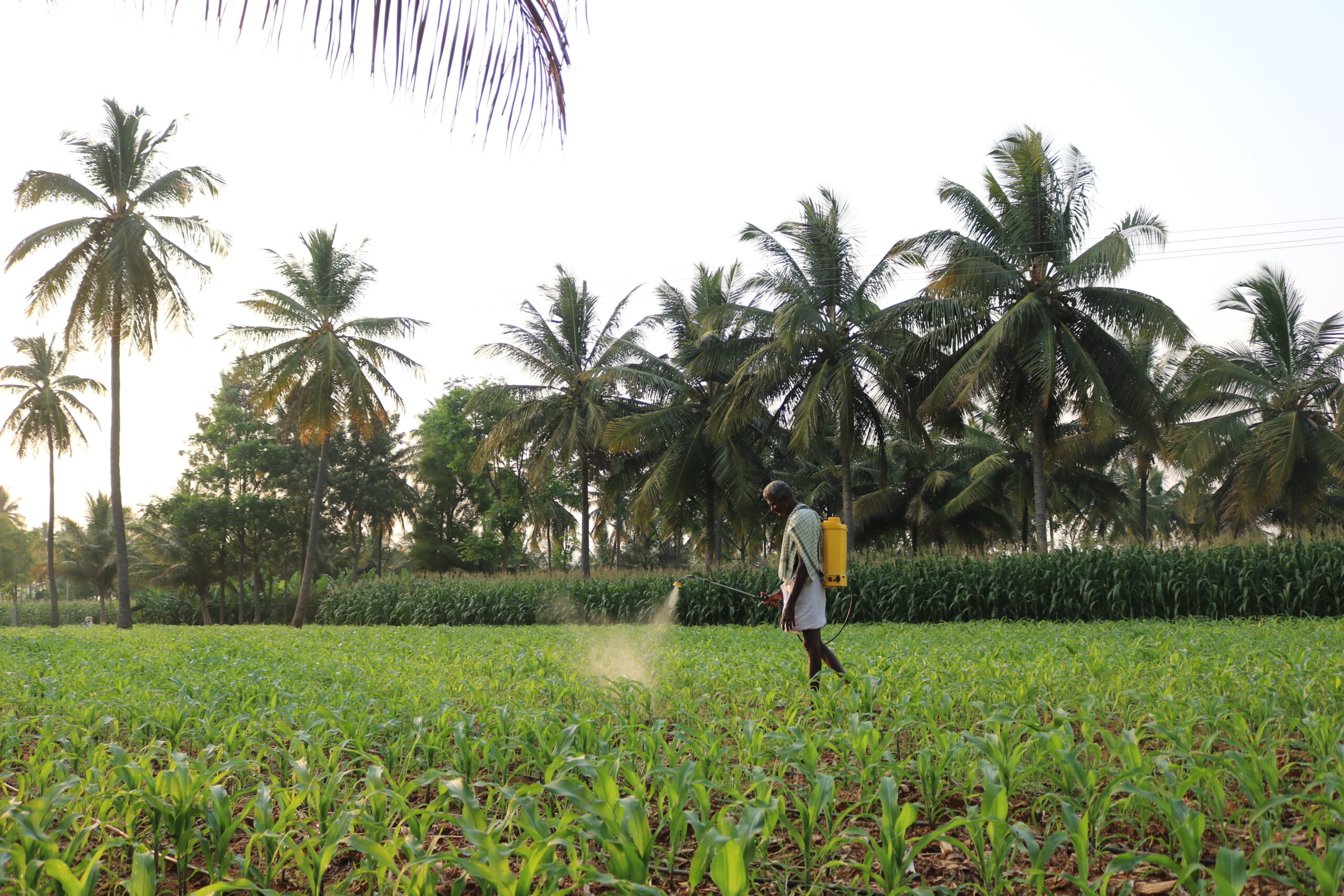The Road to Financial Inclusion in Rural India
By Snigdha

Investing in technology is critical for transforming agriculture in India, yet many rural families, particularly farmers, struggle to adopt innovative solutions due to limited access to financing. In this article, we look at the progress made, the need for further advancements, and the unique challenges agricultural families face in achieving financial inclusion.
Financial Inclusion in India: Progress and Gaps
The Reserve Bank of India’s Financial Inclusion Index rose to 64.2 in March 2024 from 43.4 in 2017, reflecting a steady growth rate of 5.75% CAGR. This progress has been driven by expanding digital financial services and credit growth, making financial products more accessible to a broader population. Yet, barriers like lack of awareness and procedural complexities still hinder formal financial access in rural areas.
We note that despite 78% of India’s adult population owning bank accounts (lower than Brazil, China, Russia, and South Africa), rural regions still lag in understanding and utilizing these services. Many rely on word-of-mouth and social networks for loan options, avoiding formal lending due to the perception of complicated paperwork and lack of awareness.
Agricultural families in rural India rely heavily on cultivation, wage labor, and enterprises for income. Though they have similar consumption levels to non-agricultural households, they exhibit higher savings rates. However, access to financing remains a challenge due to collateral requirements and complex application processes. While 44% of agricultural households have a Kisan Credit Card, a significant portion still lacks engagement with formal financial services.

Challenges in Accessing Formal Loans for Agricultural Families
- High interest rates and short-term maturities: Terms that don’t match agricultural cycles.
- Collateral requirements: Small landholders often lack necessary security.
- Complex application processes: Extensive paperwork deters low-literacy households.
Additionally, families with larger landholdings tend to find it easier to secure loans due to their ability to provide collateral and their perceived repayment capacity. In contrast, smaller landholders struggle to access the same opportunities, often turning to informal sources like local money lenders who charge high-interest rates.
Formal Credit in Rural Regions
According to NABARD’s Survey on Rural Financial Inclusion, over four-fifths of respondents preferred institutional sources when seeking loans. However, a significant one-fifth still rely on non-institutional sources.
The continued (albeit reduced) preference for informal, or non-institutional, loans amongst rural households (be it agricultural or non-agricultural) is a pressing concern. Several factors contribute to this:
- Ease of availability: Flexible repayment terms fit seasonal income patterns.
- Minimal or no interest: When loans are availed from friends or family, they are often low on interest or even interest-free.
- Trust in personal relationships: Borrowing from known sources feels secure.
- No documentation: Formal loans involve extensive paperwork, which can be a significant barrier.
These preferences highlight why rural households, despite improved financial inclusion, may avoid formal lending.
What needs to change?
To empower agricultural families, we need tailored financing solutions, simplified loan processes, and further non-collateral loan access. Financial literacy programs can educate rural communities on the benefits of institutional borrowing, and tools like the Kisan Credit Card can deepen financial inclusion.
Women in rural areas often face additional barriers to financial inclusion compared to men. Many women rely on male family members—such as husbands, fathers, or brothers—to conduct financial transactions on their behalf. This dependency is partly due to the lower number of bank accounts held by women and their limited access to financial services. Even when they do have bank accounts, women’s participation in financial decision-making tends to be restricted. Access to digital financial services is also a significant challenge for women, with many lacking smartphones or internet access necessary to make online payments. This digital divide further limits their ability to engage in the growing landscape of digital financial products and services, leaving them dependent on cash-based transactions and informal credit sources. Addressing these gender-specific barriers is crucial to financial inclusion.
Peer-to-Peer (P2P) Lending: An Innovative Solution
P2P lending platforms can bypass traditional barriers, reducing interest rates and collateral needs while making loans more accessible. This approach could enable rural families to invest in modern agricultural technologies, boosting productivity and income. Read more about Essmart’s recent efforts towards P2P lending in rural south India here.
The Challenge Ahead
Financial inclusion plays a crucial role in enabling people to save money, access credit, and secure loans. In short, it lays the foundation for long-term financial stability. The benefits of financial inclusion extend to increased wealth-building, job creation, and improved access to essential services like clean water and sanitation. However, several challenges persist, with technological adoption and lack of awareness being the most prominent barriers. In India, understanding socio-cultural and infrastructural differences in how money is perceived and loans are utilized is crucial in order to design products and policies. Addressing these issues can pave the way for sustainable economic growth for the country’s population.
Essmart is dedicated to empowering rural families by providing affordable loans and innovative credit solutions, facilitating the adoption of new technologies in agriculture. Through partnerships with cleantech and agri-tech sectors, we aim to eliminate financial barriers and promote sustainable growth for India’s farmers.
Sources:
- Mishra, Deepak, et al. “Financial Inclusion and Its Ripple Effects on Socio-Economic Development: A Comprehensive Review.” Journal of Risk and Financial Management, vol. 17, no. 3, Mar. 2024, p. 105. DOI.org (Crossref), https://doi.org/10.3390/jrfm17030105.
- Ramanathan, Shrinidhi. “Financial Inclusion Improves in India but Still Lags Global Peers.” BusinessLine, 19 July 2024, https://www.thehindubusinessline.com/data-stories/data-focus/financial-inclusion-improves-in-india-but-still-lags-global-peers/article68422028.ece.
- All India Rural Financial Inclusion Survey (NAFIS). National Bank for Agriculture and Rural Development, 10 Oct. 2024, https://pib.gov.in/PressNoteDetails.aspx?NoteId=153270&ModuleId=3®=3&lang=1.
